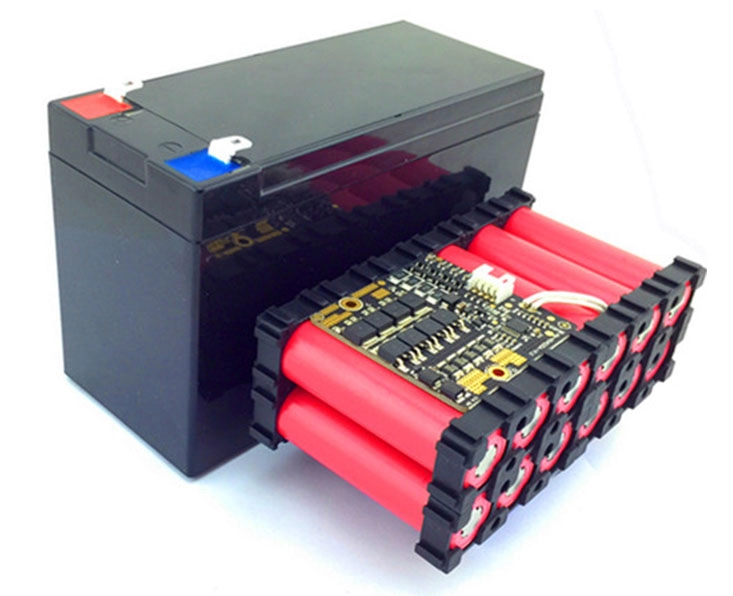Amp hours (Ah) are a crucial unit in the realm of lithium-ion batteries, determining a battery’s capacity and overall performance. This article delves into what Ah is, its importance, and how it helps you better understand and calculate battery performance.
Part 1: What are Amperes and Amp-Hours?
“Amp” is short for “ampere,” which is the unit used to measure electric current. It represents the rate at which electric charge flows through a circuit, indicating the amount of electric charge flowing through a conductor at any given moment.
To illustrate this more clearly, imagine electricity as water flowing through a pipe. The amount of water flowing through the pipe in a given time is analogous to electric current, measured in amperes.
On the other hand, amp hours (Ah) are used to measure the capacity of a battery to store the capacity of a battery to store the electric charge. It’s like the capacity of a bucket. The higher the Ah rating of a battery, the more electric charge it can store, and the longer it can power a device.
In simple terms:
- Amps are like the rate at which water flows through a pipe.
- Amp-hours are like the size of the bucket holding the water.
Understanding these concepts is essential for selecting the right battery to meet the energy needs of your devices. For example, understanding the difference between 3.6V and 3.7V lithium batteries is important when assessing your power requirements.
Part 2: What Does Ah Stand For on a Battery?
Ah stands for Ampere-hour, which is a unit of measurement for the capacity of a battery to store electric charge. It tells you how much electrical energy a battery can store and for how long it can provide power.
Imagine a bucket that holds water; the size of the bucket determines how much water it can hold. Similarly, a battery’s Ah rating tells you how much the electric charge it can store.
For example, a battery rated at 5 Ah can provide a steady current of 1 amp for 5 hours before needing to be recharged.
Part 3: How to Calculate the Ah of a Battery
Suppose you have a flashlight that requires a battery, and you want to determine the Ah rating needed to run the flashlight for a specific duration.
Here’s how to calculate it:
- Determine the power requirements of the flashlight. Let’s assume the flashlight uses 0.5 amps of current.
- For this example, assume a continuous operation time of 10 hours.
- Calculate the Ah rating using the following formula:
Part 5: Key Battery Capacity Terms Explained
Battery Life Calculation:
If a device consumes 0.42 amps of current, the estimated battery life is calculated as follows:
Battery Life = 10 Ah / 0.42 Amps ≈ 23.8 Hours
This estimate indicates how long the battery can power the device before needing a recharge.
Amp Hours (Ah):
Amp hours measure a battery’s energy storage capacity, indicating the amount of current it can provide over a specific period.
Ohms (Ω):
Ohms (Ω) are the unit of resistance, measuring a component’s opposition to the flow of electric current. Materials with lower resistance allow more current to pass through, while materials with higher resistance restrict current flow. Ohm’s Law (V = IR) relates voltage (V), current (I), and resistance (R) in a circuit.
Volts (V):
Volts (V) represent the electric potential difference in a circuit, acting as the driving force for current flow.
Watt Hours (Wh):
Watt hours represent the electrical energy consumed or produced over time. It is calculated by multiplying voltage (V) by amp hours (Ah). Watt hours show the total energy capacity of a battery or the energy consumption of a device over a specific time. For example, a 12V battery rated at 5Ah has a capacity of 60Wh (12V × 5Ah = 60Wh).
Part 6: Frequently Asked Questions
Are Lithium Batteries with Higher Amp Hours Better?
Lithium batteries with higher amp hours can store more energy, resulting in longer run times for devices.
What is the Difference Between Amp Hours and Milliamp Hours?
Amp hours (Ah) and milliamp hours (mAh) both measure battery capacity, where 1 Ah is equal to 1000 mAh.
What is the Difference Between 2.0 Ah and 4.0 Ah?
A 4.0 Ah battery has twice the capacity of a 2.0 Ah battery, meaning it can store and deliver twice the energy.
Are Amp Hours Important for a Battery?
Yes, the amp hour rating matters because it indicates the energy storage capacity of the battery and how long it can power a device.
Can I Use a 5Ah Battery Instead of a 2.5 Ah Battery?
Yes, you can replace a 2.5 Ah battery with a 5Ah battery. Since the 5Ah battery has a higher energy storage capacity, it can provide a longer run time.








